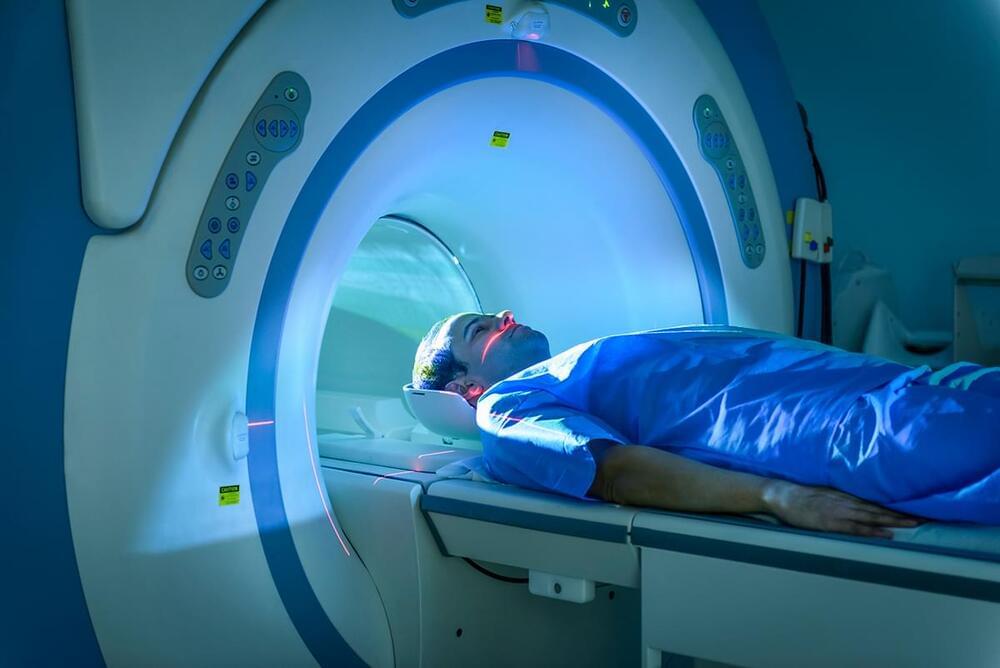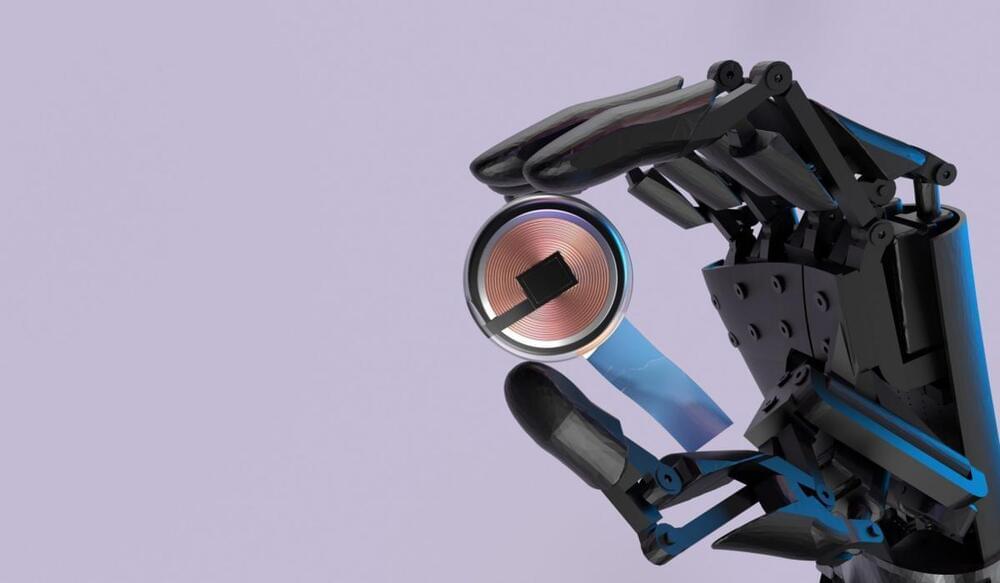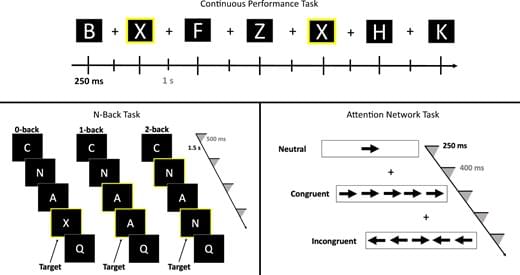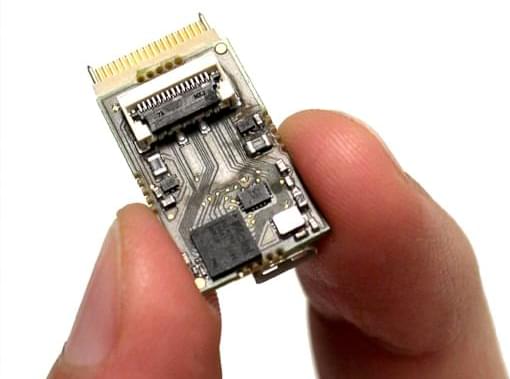Canadian researchers are closing in on a novel approach to treat liver tumours using microrobots in a MRI device.




Superintelligent AI might solve all the world’s problems. It could cure cancer, eliminate human aging, create a world of abundance for all.
Superintelligent AI might also prove completely uncontrollable and destroy humanity, whether intentionally or as mere collateral damage in the path of achieving other goals.
The clashing viewpoints about the potential and dangers of peak AI live at the heart of the battle of techno-optimists and doomsayers, accelerationists vs doomers.

Despite preventive strategies, cytomegalovirus (CMV) remains a leading cause of disease after solid organ transplantation. Indirect effects of CMV infection include organ-specific complications (e.g., chronic allograft nephropathy, cardiac vasculopathy) as well as more-general effects including excess risk for rejection and death. After lung transplantation, chronic lung allograft dysfunction (CLAD) is the most important limitation to long-term survival. Thus, investigators sought to determine the role of CMV in CLAD.
Among 668 lung transplant recipients, 647 had evaluable data. CLAD developed in 39% and was associated with high-risk (CMV donor positive/recipient negative) serostatus and, to a lesser degree, intermediate-risk (CMV recipient positive) serostatus. CLAD was not associated with CMV DNAemia. By contrast, CMV DNAemia was associated with the combined endpoint of death or re-transplantation, and higher CMV levels were associated with increased risk.
The causes of CLAD remain obscure, frustrating efforts to improve outcomes after lung transplantation. The authors speculate that CMV replication limited to the allograft — and possibly combined with episodes of CMV DNAemia without lung involvement — might explain the association of CLAD with CMV as determined by serostatus but not DNAemia. Further research is necessary to determine if serosorting (i.e., only transplanting lungs from CMV-negative donors into CMV-negative recipients) or life-long CMV prophylaxis in high-risk recipients is justified.

A study involving long-term acute lymphoblastic leukemia (ALL) survivors found certain genetic variants related to the folate pathway, glucocorticoid regulation, and other factors were associated with impaired attention, motor skills, memory, and more. Read the article here:
Genetic predispositions may modulate risk for developing neurocognitive late effects in childhood acute lymphoblastic leukemia (ALL) survivors.
Methods.
Long-term ALL survivors (n = 212; mean = 14.3 [SD = 4.77] years; 49% female) treated with chemotherapy completed neurocognitive testing and task-based functional neuroimaging. Based on previous work from our team, genetic variants related to the folate pathway, glucocorticoid regulation, drug metabolism, oxidative stress, and attention were included as predictors of neurocognitive performance, using multivariable models adjusted for age, race, and sex. Subsequent analyses evaluated the impact of these variants on task-based functional neuroimaging. Statistical tests were 2-sided.

The Florida measles outbreak is expanding. On Friday, health officials in Broward County confirmed a seventh case of the virus, a child under age 5.
The patient is the youngest so far to be infected in the outbreak, and the first to be identified outside of Manatee Bay Elementary School in Weston, near Fort Lauderdale.
It’s unknown what connection the youngest measles case has to the school, but the spread beyond school-age kids was expected.


Here’s my latest Opinion piece just out for Newsweek. Check it out! Lifeboat Foundation mentioned.
We need to remember that universal distress we all had when the world started to shut down in March 2020: when not enough ventilators and hospital beds could be found; when food shelves and supplies were scarce; when no COVID-19 vaccines existed. We need to remember because COVID is just one of many different existential risks that can appear out of nowhere, and halt our lives as we know it.
Naturally, I’m glad that the world has carried on with its head high after the pandemic, but I’m also worried that more people didn’t take to heart a longer-term philosophical view that human and earthly life is highly tentative. The best, most practical way to protect ourselves from more existential risks is to try to protect ourselves ahead of time.
That means creating vaccines for diseases even when no dire need is imminent. That means trying to continue to denuclearize the military regardless of social conflicts. That means granting astronomers billions of dollars to scan the skies for planet-killer asteroids. That means spending time to build safeguards into AI, and keeping it far from military munitions.
If we don’t take these steps now, either via government or private action, it could be far too late when a global threat emerges. We must treat existential risk as the threat it is: a human species and planet killer—the potential end of everything we know.


The era of bioelectronic healthcare is dawning upon us. As electronic systems shrink in size and improve in functionality, we see more and more emerging devices that can track vital signs, such as heart rate and blood pressure, realising the grand vision of highly connected sensor nodes monitoring patients’ health beyond the hospital doors. The real revolution in digital healthcare, however, lies in bringing not only the diagnostics but also the therapy to the patient which requires interfacing the world of electronics with biology.
Interfacing the nervous system provides an immense opportunity to observe (through recording) and modify (through stimulation) the functional state of the biological system to fundamentally understand various diseases and health conditions, and to ultimately develop suitable therapies through closed-loop systems [1]. Consequently, a host of neural interface modalities, with varying levels of invasiveness, have been developed over the past decades. Among all, interfacing at the individual neuron level allows the highest level of information transfer from the brain.
Despite the success of devices such as Cochlear Implants, interfacing at the individual neuron level is still severely limited due to challenges such as selectivity (for stimulation) and thermal-limitations imposed on data transmission to prevent neural tissue damage. The latter is a major bottleneck in improving information transfer rate of neural recording systems as they scale up. Hence, there is currently a tremendous drive to develop new enabling technologies for neuroscience to provide insightful views on how motor or sensory information is represented and transformed by the brain, as well as revealing how this complex system is affected by neurological injuries and disease.